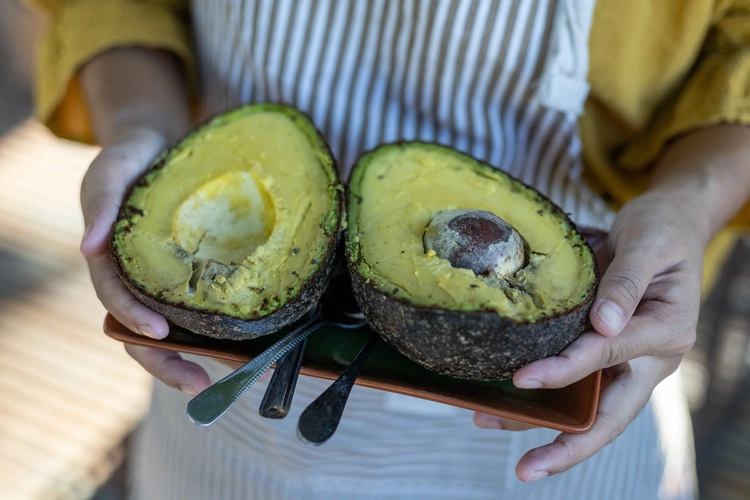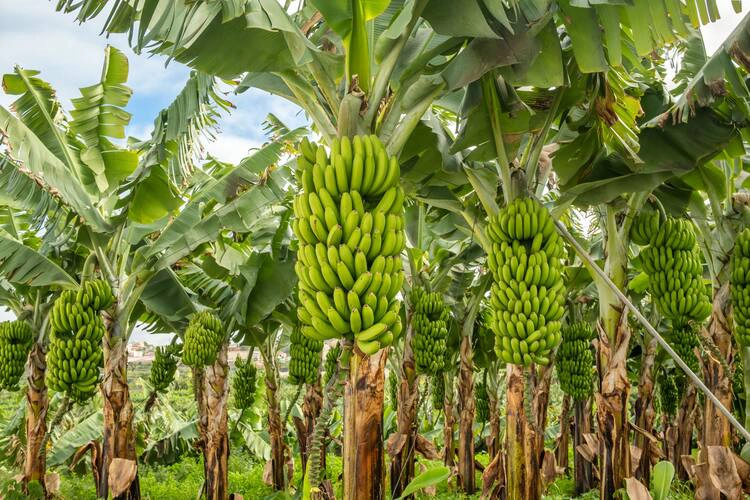


Andrew Brooks on why our growing taste for avocados has complex consequences in a global market
If any food has been the flavour of the last decade, it’s the rich, creamy and nutritious avocado. The fruit is favoured for its unique health benefits, including ‘good fats’ that make it popular in many diets. The vivid green flesh is an Instagram favourite and graces many carefully curated breakfast plates. It also makes a good emoji.
Avocados tend to be expensive and are emblematic of conspicuous millennial consumption. As the Australian real estate mogul Tim Gurner infamously argued in a 2017 interview that resonated around the world, young people should stop buying avocados: ‘When I was trying to buy my first home, I wasn’t buying smashed avocado for $19 and four coffees at $4 each.’
Yet Generation Rent’s choices of wholesome snacks and flat whites over long-term property investments are not merely satisfying a hunger for instant gratification and social media likes. Conspicuous consumer spending on everyday pleasures is rational if the prospect of home ownership is so distant as to be unobtainable. As the growth in house prices has outstripped increases in incomes, it becomes logical for the young to pivot away from dreams of home ownership and embrace the opportunities to consume today rather than save for tomorrow.

Until recently, the avocado was uncommon in even the most populated regions of Australia’s cosmopolitan and rapidly gentrifying southern cities, such as Sydney and Melbourne, where Gurner made his money. They were also less familiar to older generations in Northern Europe and little known in North America beyond the warmer zones of the southern states. Therefore, as the fruit has become more popular, it’s unsurprising that it has first found favour among younger urban consumers in big cities, the very same people who find it hardest to afford a home. When the baby boomers grew up, there were no avocados on the greengrocer’s stall, but there were more affordable home-ownership prospects.
In Australia in particular, big cities have had huge growth in property prices. International investment has poured in Down Under, and the country has the third-highest house-price-to-income ratio in the world, so it’s unreasonable to think that young people can save their way onto the property ladder by foregoing small luxuries. The comparison between eating an expensive brunch and saving for a mortgage isn’t helpful – it’s patronising.
Choosing an avocado can be difficult. A ripe one will yield to soft finger pressure; if it feels mushy, it’s too far gone. Touch is a more reliable sense than sight, as the pear-shaped fruits vary in colour from lurid greens to deep purple-blacks. Supermarket shoppers in temperate climates unfamiliar with handling avocados might not be aware of the difference between the soft-skinned, larger, iridescent Gwen, Pinkerton and Reed, which are all green avocado varieties, and the harder, smaller, darker black Hass avocado. The Hass is the more consistent and safer choice.
Once the fruit has been selected, opening it is the next challenge. It pays to be careful when peeling and cutting. Such is the prevalence of accidental self-inflicted stabbing to the non-dominant hand that holds the fruit when the inexperienced cutter tries to pry out the big brown golf ball of a stone that some surgeons speak of it as ‘the avocado hand’ injury.
Hass avocados make up around 80 per cent of the global trade. They are durable and easy to transport. In the mountainous regions of the Colombian interior, Hass are more commonly grown on large-scale commercial farms rather than subsistence smallholdings, where the more delicate green varieties predominate. In the restaurants of Bogotá, Colombians prefer the creamier green fruits. Colombia has a big domestic market for avocados, so big in fact that it receives imports from neighbouring Ecuador and Venezuela, but the national trade strategy is turning towards export-orientated agriculture and pushing Hass rather than trying to satisfy local demand.

As Juan Manuel Santos, Colombia’s former president, explained: ‘We managed to open the market for Colombian avocados, which is a golden opportunity for thousands and thousands of farmers and trade in general.’ But in order to produce export-grade Hass fruits of equal weight and with glossy black uniform surfaces it’s necessary to implement highly controlled production techniques. To meet global demand, the Colombian government is promoting Hass farming over traditional green avocado agriculture, but who are the winners and losers from this decision?
Until recently, Colombia’s export earnings from avocados were negligible, less than US$10,000 a year in 2007, but they’ve risen exponentially to around US$179 million in 2022. The Hass avocados are the only ones exported at scale as they meet the expectations of international consumers thousands of miles away. Supermarkets in the Netherlands, the USA, Spain, the UK, France, Belgium, Germany and Hong Kong want Colombian avocados that are the right size, have bright skin and are flawless, and the Hass is the regular and standardised crop.
Taste is subjective, but the harder, darker Hass arguably have less flavour than the richer green pear-shaped fruits that come in different shapes, have mottled surfaces, are prone to bruising, and vary in size. Government agricultural extension agents promote Hass growing and adherence to the requirements of overseas consumers even though small farmers aren’t capable of growing export-grade avocados. Only large-scale growers located in high-altitude areas with the money to afford new technology can benefit from the opportunities presented by the global avocado boom.
The long-standing farmers who produce green avocados on small holdings don’t specialise in this one fruit. They grow other crops to reduce risk and provide a more stable income. Plants are mixed together, benefitting local biodiversity. Quick-growing plantain is sown between young avocado trees, to provide some income and pay for the costs of planting the slow-maturing avocado.

Cocoa, mangoes and cassava are all grown together with avocados. In the upland region of Santander, smallholding combines all these food crops in an indistinguishable melange of trees and bushes that contrasts with the ordered landscape of mono-crops on commercial farms. Multi-cropping practices result in a lower average income but also reduce expenditure on pesticides and fertilisers, and provide reliable revenue as different crops are harvested throughout the year. Big agriculture grows Hass avocado trees in uniform, perfectly aligned rows that are irrigated by dripping, fertilised and treated with chemicals when workers detect fungi or certain insects.
This modern, industrialised approach to agriculture is less sustainable and doesn’t integrate with local ecosystems. In contrast, government agricultural extension officers see small farmers’ ‘old fashioned’ practices as irrational. Some argue they should borrow money and invest in new techniques and grow Hass fruit. They attribute the farmers’ intransigence to outdated cultural traits. But this isn’t a fair comparison. Their actions may not be rational in a narrow economic sense — if a farmer had capital, complete knowledge of the global market and an entrepreneurial spirit, they would act in their short-term self-interest to maximise profit. But smallholders don’t act like this. Experienced smallholders don’t want to mortgage their farms to finance new technology and instead manage their land sustainably and are averse to the risks associated with the fluctuations of global markets and the natural environment.

Between 2011 and 2016, the planted area of avocado in Colombia nearly doubled from 35,211 to 66,921 hectares. The growth in commercial large-scale Hass agriculture is impinging on the livelihoods of small farmers. New mono-cropping farmers are attracted by export prospects but also sell to local markets, offloading excess and lower-grade fruit, so they compete for the custom of domestic consumers that once only small, sustainable local farmers supplied. Their Hass products sell for less in local supermarkets than the green fruits. This is hitting the incomes of small farmers who’ve grown green avocados for generations. Their livelihood opportunities have steadily deteriorated due to government policies focused on global markets.
The lesson here is that globalisation has unpredictable impacts. You would think that the growing international appetite for avocados among urban millennials would be great news for farmers who’ve grown avocados for generations in rural Colombia, but the outlook for many smallholders is a more difficult domestic market. By promoting hi-tech farming and offering business support to new producers orientated towards global markets, government agents are contributing to squeezing pre-existing farmers out of domestic markets.
The competition between the two types of agriculture is reshaping rural livelihoods and economies, replacing sustainable agriculture with a landscape of more industrial farming. Big agro-industry is winning and small-scale farmers are losing out. They have declining incomes despite the worldwide boom in the avocado trade. Like the young renters in Sydney’s and Melbourne’s globalised housing markets, they face an uncertain future.




